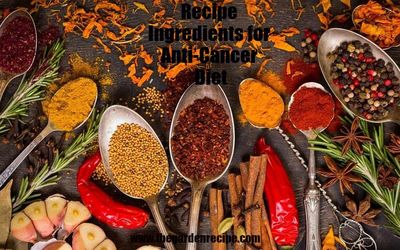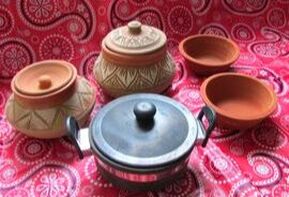|
Diagnosed with cancer? Before going to the doctor, empower yourself with cancer terms & inflammatory markers so you are prepared & will not allow the doctor to scare you. So, lets jump straight to business today. Why should you learn the meaning of important cancer & inflammatory terms before heading out to your doctor? Simple! So that you will know your diagnosis better and you will not allow the doctor to scare you or dictate how soon your life is about to end if you don't do this or that. Ridiculous! OK. So, let's start right away. First things first. What IS cancer? ------------------------------------------------------------------------------------------------ What is Cancer? Malignant, abnormal growth of cells in the body. This growth is uncontrollable as it divides and destroys body tissue as well as have the possibility of spreading from origin organ to other nearby organs in the body. For a cell to become cancerous, many steps or rather a process is required, for normal cell to become into a cancer cell. Directly from Wikipedia: All tumor cells show the six hallmarks of cancer. These characteristics are required to produce a malignant tumor. They include:
Symptoms - The symptoms a cancer patient will have depend on the type of cancer as well as the 'health' state of the body. So, a person who got cancer but otherwise have lived a healthy lifestyle will have less symptoms then the person who has been making unhealthy lifestyle choices. Either way, cancer symptoms can include (but not limited to) blood loss through urine, lumps/cysts/mass, weight loss, fatigue, skin changes, swollen lymph nodes, enlarged prostate or testicle change in men, bleeding, digestive issues, etc. Names of Cancer - Depends on organ name usually; so for example, in breast, it is called breast cancer: prostate, it is called prostate cancer and so on. ------------------------------------------------------------------------------------------------ Major Cancer Types:- Carcinomas - The most common. It originates in the skin, lungs, breasts, pancreas, and other organs and glands. Lymphomas - Cancer of lymphocytes. Leukemia - Cancer of the blood. Sarcomas - Cancer in bone, muscle, fat, blood vessels, cartilage, or other soft or connective tissues of the body. Melanomas - Cancers in skin pigment. ------------------------------------------------------------------------------------------------- First Cancer Diagnosis Defined Precancerous - Refers to cells that have the potential to become cancerous. Also called pre-malignant. Primary Cancer - Original cancer: where the first cancer started - that organ's cancer is the primary cancer. Invasive Cancer - Cancer that spreads outside the layer of tissue from where it started, its original site and is growing into surrounding, healthy tissues or body parts. Also called infiltrating cancer. E.g - Breast cancer. Non-Invasive Cancer or In situ - Cancer that has not spread to nearby tissue. Localized cancer - Cancer that is confined to the area where it started and has not spread to other parts of the body. Locally Advanced Cancer - Cancer that has spread outside the organ it started in but not to distant parts of the body. Metastatic Cancer - The spread of cancer from original cancer to other parts of the body. Staging - The way cancer is described by "stage," where it is located, whether or where it has spread, and whether it is affecting the functions of other organs in the body. __________________________________________________________________________________________________________________ How does cancer travel? Cancer cells break from the primary tumor and travel through the blood or the lymphatic system. Therefore, metastasis means the start of other new or secondary cancer because now the malignant, abnormal cells are multiplying at a faster rate and traveling through blood or lymph system. ------------------------------------------------------------------------------------------------ What is Benign vs. Malignant? Benign refers to a tumor/mass/nodule that is not cancerous. Not metastatic in nature; meaning the tumor has not invaded nearby tissue or spread to other parts of the body. Malignant means that the tumor/mass/nodule is cancer and can or will invade the nearby tissue or organs via blood or lymph system. In malignant cancers, when the tumor starts invading other parts of the body, then it is called metastasis. It starts interfering with other body functions and pulls nutrients from other tissues. ------------------------------------------------------------------------------------------------- How is Cancer Diagnosed? Cancer is diagnosed by biopsy, medical imaging, screening tests, tumor markers, physical exams (to check for lumps), blood tests done on the cell's protein, DNA & RNA. Biopsy - This is the examination of tissue removed from the body and examined under a microscope. Other tests can suggest that cancer is present, but only a biopsy can make a definite diagnosis and this is because the x-rays & CT-scans can show where the mass/lump is in the body but they can't tell the difference between cancerous and non-cancerous cells. Biopsy is also great because doctors will use the results to tell whether there is metastasis and if there are other abnormalities in the body to be concerned about. Biopsy Specimen - This is the tissue sample taken for biopsy examination. Who studies the biopsy? This can be a pathologist, radiologist, oncologist, surgeon, cytologist - all as part of cancer treatment team. Pain, Procedure & Risks - Usually anesthesia is given to numb any pain the patient might feel. There might be little to no bleeding at the biopsy site. You will also be detailed before the biopsy on how to prepare for the procedure. As far as risks go, there is concern that cancer cells might spread from needle biopsy but this risk seems unfounded. Example - A doctor comes in a room and announces with a smile, "congrats! you do not have any cancer..biopsy confirmed that it is just a tiny lump of benign cells!" ------------------------------------------------------------------------------------------------ How does cancer manifest? Cancer is not just a result of some nutrient deficiency or simply just bad eating habits - it is much more than that. Cancer is slow progression of inflammation in the body. It is also sometimes linked to gene-mutations caused by radiation, smoking, environmental toxins, hormones, carcinogens(cancer causing substances), emotional trauma, stress, toxic suppressed emotions, and such similar factors like gmos, toxic chemicals in household cleaning products, etc, all that inhibit the proper functioning of our body. ------------------------------------------------------------------------------------------------- The Main Culprit: Inflammation Inflammation seems to be the culprit behind present day horrors when it comes to our health crisis; from obesity to arthritis to diabetes to cancer...you name it; it is all underlying inflammation. But before we go on to study about inflammation markers, we need to understand 3 very important definitions; inflammation, inflammation markers and cytokines. Inflammation - This is body's response to pathogens or foreign invaders like viruses or bacteria, infections, wounds, allergies, tissue damage, injury, accidents, and such. So, inflammation is a good thing as it implies that your immune system is working in great condition and doing what it needs to do: that is heal the body when in trouble. In fact, without inflammation, the body will not only not heal itself but also will not be able to tell you that it needs help: that something is wrong. Inflammation is our body's innate healing ability - that is, it is a gift to us since birth as it detects what needs to be healed and starts working for our well-being. When Inflammation is a Problem - Inflammation becomes a problem if it continues(chronic) for a long time and does not subside when it is suppose to. This can be due to reasons such as inflammatory foods, chemicals that act as irritants to the body, unhealthy lifestyle habits, smoking, alcohol, etc. In this case, chronic inflammation will eventually lead to autoimmune condition, arthritis, diabetes, etc and also cancer. ------------------------------------------------------------------------------------------------- Inflammatory Markers - What are they & their importance. Inflammation Markers - Markers in blood test used to show inflammation. Cytokines - Cytokines are made by the immune system as well as endothelial cells, fibroblasts and stromal cells. They are a group of proteins and act as chemical messengers. Different cytokines include chemokines, interferons, interleukins, lymphokines and tumor necrosis factor. Your cells communicate all the time with other cells to let each other know what's going on in the body. Cytokines are just that - chemical messengers in the immune system. Each cell has its own receptors - this means that when messages arrive, they are received by these receptors that bind to the cells. Cytokines released by one cell bind to the receptors of other cells and in turn, affect their actions. Cytokines can work together with other cytokines or they can inhibit the actions of other cytokines. Example - Think of your e-mail system as your cell and the inbox as receptors. Now based on the message, you will reply and send to the sender. This is how cells communicate - by receiving messages and acting/replying according to the messages received. Cytokines play a very important role in inflammation and immunity; thus their understanding is crucial for every one of us. Because they regulate the maturation, growth, and responsiveness of cell populations, they are important in cancer study as well. Cytokines (extracted & made into drug via DNA technology) are used in cancer treatment as well. There are different kind of cytokines but before we take a look at them, lets visit a very important process in our body - chemotaxis. Chemotaxis - This term simply means the movement of cells towards or away from the source of chemical message. This is the ability to call other cells for assistance using chemical messages. Example -
Positive Chemotaxis - Movement of cells/organisms where they are attracted to the higher chemical message. Negative Chemotaxis - Movement of cells/organisms where they are repelled to the chemical message - thus creating movement in opposite direction. So, let's study some of the most imp. inflammation marker that blood tests will show in red if there is cancer. Chemokines - As the name suggests, they are cytokines that have the ability to drive chemotaxis. They are signaling proteins that are secreted by cells in response to infection. Example - When an infection is detected, these cells are sent chemical messages and then they go and respond to take care of the infection. Interleukins(IL) - Interleukins are proteins that help in immune and inflammatory responses. Interleukins create communication between leukocytes. They are produces by white blood cells. Interleukins are responsible for cell growth, differentiation & motility (the ability of organism to move independently). They bind to the target cell's receptor on cell's surface. Their name is derived from "inter," meaning to communicate between cells & "leukin," is from leukocytes. There are 15 different types of interleukins knows - IL-1 to IL-15. Interferon - These are proteins that are released by host cells in order to fight pathogens, such as viruses, bacteria, parasites, or tumor cells. They are also produced by white blood cells, fibroblasts or T-cells. Their name comes from their ability to "interfere" with production of new pathogens or tumor cells. IFNs are divided in 3 groups - Type I IFN, Type II IFN, and Type III IFN. IFNs belonging to all three classes are important for fighting infections and for the immune system. CRP - C-reactive protein (CRP) is the most preferred test to detect acute inflammation. It is produced by liver as a response to acute inflammation. It is an acute phase protein found in blood plasma and it increases after IL-6 is released by adipocytes (fat cells) and macrophages. IL-6 stimulates the liver to produce CRP. CRP binds to the phosphocholine on the surface of dead or dying cells and some bacteria. TNF-alpha can cause a rise in CRP. CRP is measured by its rate of production in blood as it has a plasma half-life of 19 hours. The rate of CRP production increases with inflammation, infection, trauma, necrosis, malignancy, and allergic reaction. Tumor Necrosis Factor-alpha or TNF-α - These are cytokines involved in systemic inflammation. They are produced by many other cells but mainly by macrophages (type of white blood cell). They are important because they can induce fever, cell death (apoptosis), inflammation, inhibit cancer growth, and viral replication. Other inflammatory markers used in blood tests are:- Erythrocyte Sedimentation Rate (ESR) - Blood test to see how quickly erythrocytes (red blood cells) settle at the bottom of a test tube. A faster-than-normal rate of settling may indicate inflammation in the body Plasma Viscosity test - This measures the amount of protein present in the plasma (liquid) part of the blood. It can reflect the degree of inflammation present in the body. It also detects the presence of abnormal para-proteins, produced by benign or malignant tumors. ------------------------------------------------------------------------------------------------ SOME IMPORTANT CANCER TERMS Apoptosis - The death of cells that occurs as a normal and controlled part of an organism's growth or development. Angiogenesis - Physiological process through which new blood vessels form from pre-existing vessels.This process is a normal part of growth and healing. Angiogenesis Inhibitors - These are drugs that block angiogenesis. By blocking nutrients and oxygen from a tumor, it starves and dies. Inhibitor - A drug or therapy that slows down or prevents a particular chemical reaction or some process, or that reduces the activity of a particular reactant, catalyst, or enzyme. Tumor Necrosis - This means that most of the cells in a cancer are dead and can be seen in a tissue sample. This is a death of tumor tissue because the tumor has run out of blood supply. This is limited often to a small, local area of the tumor. Oncogenes - Genes that promote cell growth and reproduction. Tumor Suppressor Genes - Genes that inhibit cell division and survival. Malignancy occurs when oncogenes inappropriately overtake or by the under-expression or disabling of tumor suppressor genes. Lifetime risk - The probability of developing a disease or dying from that disease during one's lifetime. ------------------------------------------------------------------------------------------------- So, this is it for now. In our next articles relating to cancer and inflammation, we are going to talk about treatments and terms. If I write all about that here, it is going to be too much for you and that is NOT my goal. It is to educate and empower all my readers, by first, learning these important basics without the overwhelm. I have tried my best to compile the information and then adjusted it in a easy to understand manner. I hope the intention came through. Plz. spend time reading this article 2-3 times, or more. If you need to, bookmark it and then read it over the weekend. This is life-changing article as it not only explains the blood tests but also gives a clear window into one's body when problem arise..or when the body is functioning optimally. -Somyata. Some Posts You Will Definitely Enjoy!
7 Steps to Anti-Cancer Diet A "MUST" for Health - Ginger-Garlic Paste Cabbage w/Peas
2 Comments
~ Nona
10/3/2018 13:31:35
Thank you for this detailed information. So far, I've dodged the cancer bullet but two of my (eleven) siblings have not. Both changed their diets radically to a vegetable-based diet with lots of juicing (with green vegetables).
Reply
Somyata
10/4/2018 12:31:39
So sorry to hear about your brother but I am SO GLAD he opted for diet change instead of conventional cancer treatments which I know would have taken him much earlier..
Reply
Leave a Reply. |
Quick Recipes for You Indian Cucumber Salad
Potato Curry in Coconut Milk
Clay Pot Series Videos Clay Pots Buying Guide in India
Bringing Clay Pots from India to US
My Beautiful Clay Pots REVEALED!
Which Clay Pot is Right for You?
Some Helpful Articles Ayurvedic Tips for Digestion
Buddhism: The Four Elements of Love
Buddhism: What Is Metta Meditation?
|
The Garden Recipe - Subscribe To The Newsletter HERE
DISCLAIMER TERMS & CONDITIONS PRIVACY POLICY
All Rights Reserved


















